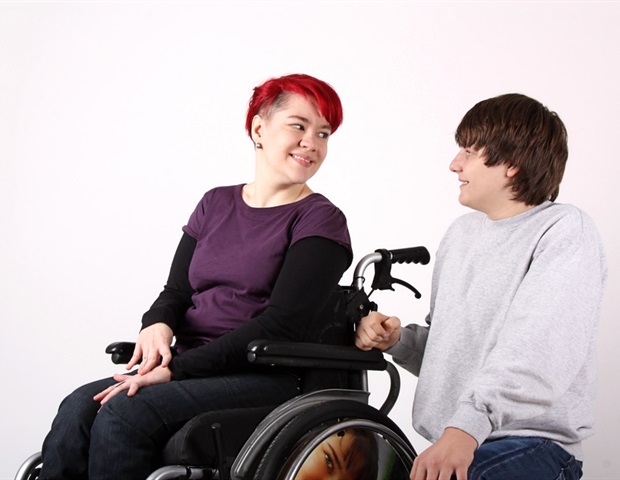Maybe you know a smoker who never exercises and is living happily into old age. Or perhaps you read about a veggie-loving marathon runner who had a heart attack in middle age.
These kinds of stories can’t help but make you think: If your health is simply written into your genes, what’s the point of all that exercise and healthy eating? Why not just do what you want?
But, says Laura Zimmermann, MD, medical director of the Rush University Prevention Center, these stories stick with us because they are unusual. They are examples of what scientists call “outliers.”
The reality is that, for most people, lifestyle habits like eating healthy foods and getting regular exercise have a big effect on age-linked health problems like heart disease, type 2 diabetes, cancer, and Alzheimer’s disease, Zimmermann says.
So it’s only about lifestyle then? Not exactly.
“Staying healthy is mostly a matter of the choices we make.” — Donald Lloyd-Jones, MD
Epigenetics: Where Your Genes Run Into Your Lifestyle
Your genes, Zimmerman says, can raise your risk for many diseases. But they do not typically work alone. And it’s rarely a single gene that determines whether you will get a disease or not. More often you inherit some genetic characteristics that make you more likely to get a disease, she says.
And even that’s not written in stone. That is, these genetic characteristics (genetic predisposition) might not affect you at all unless they are triggered by certain aspects of your surroundings (environmental factors) or your lifestyle.
These “epigenetic changes” influence the way your genetic material, or DNA, works in your body. An epigenetic change happens when lifestyle or environmental factors cause a particular gene to turn “on” or “off.” In the case of cancer, for instance, such changes might turn on a gene that enables abnormal cells to grow. Or the changes could turn off a gene that would suppress their growth.
To make matters more complicated, each gene doesn’t have just one switch. Or even a half dozen switches. “There might be hundreds or thousands,” says John Kelly, MD, MPH, president of the American College of Lifestyle Medicine.
This complexity makes it harder for scientists to figure out exactly which epigenetic change is to blame and exactly how it raises your risk for a particular disease. But experts are confident that lifestyle factors including poor diet, smoking, and lack of exercise play a major role. “They are actually driving gene expression into negative territory,” says Kelly.
They play such a big role in so-called “diseases of aging” – like diabetes and heart disease, Kelly says, that they are better described as “diseases of toxic lifestyle over time.”
Epigenetics and Diet
For example, heart disease is the No. 1 killer of both men and women in the U.S. Yet some research shows it may be possible to prevent 80% of heart disease. Why?
“I have a colleague who says that coronary heart disease is a foodborne illness,” says Kelly. “And he’s right! For the vast majority of people, it’s caused by food and can be reversed by food.”
Food affects your health directly through nutrition. It also has an indirect link through heart disease risk factors like obesity and high blood pressure. For example, there are more than 300 genetic variants that could raise your risk for high blood pressure. But even with high-risk genes, you can often cut your risk of heart disease by one-third with a healthy diet and regular exercise. (You also may need medication to lower your blood pressure – ask your doctor about this.)
For optimal heart health, experts recommend a plant-based diet. That doesn’t necessarily mean you have to go vegan or even vegetarian, says Zimmermann. “The goal is to replace some processed foods with whole foods, including fruits and vegetables.” Look for whole grains, lean protein (including nuts and seafood), and check packaging for added salt and sugar. Talk to your doctor if you’re unsure about how to design your own heart-healthy diet.
Other Lifestyle Factors: Exercise and Smoking
For exercise, experts recommend 150 minutes of moderate physical activity per week. That’s 2 hours and 30 minutes a week – less than 30 minutes a day. And you don’t have to run the Boston marathon. A walk around the block, or a bit of gardening or even dancing should do the trick.
Put in this little bit of time and you can cut your risk for a number of diseases, whether you have a genetic predisposition for any of them or not. And yet, says Zimmermann, most people simply don’t do it.
Smoking is one of the biggest risk factors for heart disease. And that goes whether or not you are genetically predisposed to heart disease or not. If you smoke, consider stopping, especially if you have heart disease or you’re at risk for it.
Your doctor can also help you find a program to help you quit smoking.
Your health habits and environment interact with your genes in similar ways for other conditions, including type 2 diabetes, obesity, high blood pressure, and to a lesser extent and some types of cancer.
Type 2 Diabetes
Type 2 diabetes tends to run in families. There are several genetic variations including KLF14, ENPP1, and numerous others that increase the risk of developing diabetes by up to 30%. But dietary factors, including how much alcohol you drink, whether you’re a smoker, and how active you are all have the potential to tip the balance one way or the other, perhaps by turning a switch on a gene on or off.
An estimated 9 out of 10 cases could be prevented through healthy lifestyle changes.
The landmark Diabetes Prevention Program found that people could reduce their risk of developing diabetes by about 65% with a careful diet and exercise plan compared to just 35% with the blood-sugar lowering drug metformin.
Cancer
There’s little doubt that genetic factors play a role in many cancers. Women who have a BRCA1 or BRCA2 gene mutation, or instance, have a 45%-72% chance of developing breast cancer in their lifetime, which is much higher than average. But many women without any known genetic mutations also get breast cancer.
Perhaps more importantly, there’s evidence that good lifestyle habits can help lower cancer risk for people with and without a genetic predisposition to various types of cancer.
While a healthy lifestyle alone won’t prevent all cancers, mounting evidence suggests that it plays an important role. A study led by Cancer Research UK found that about 4 out of every 10 cancers could be prevented by smart lifestyle choices like not smoking, maintaining a healthy weight, and eating a healthy diet. Limitations on red meat, sugar, alcohol, and time in the sun may also help.
Alzheimer’s Disease
It’s true that certain mutations to the APOE gene raise the risk of Alzheimer’s disease. If you have one copy of a version called APOE4, you’re two to three times more likely than average to develop this condition. People who’ve inherited two copies might have 12 times the average risk.
But it’s possible and even common to get Alzheimer’s if you don’t have an APOE mutation. While other, not-yet-discovered genetic factors might play a role, research suggests that lifestyle is a big factor. A meta-analysis of several studies, published in the Lancet Neurology, found that about a third of cases are caused by factors you may be able to control like diet and regular exercise.
Again, research shows diet and exercise are very important. While most healthy diets should help, the MIND (Mediterranean-DASH Intervention for Neurodegenerative Delay) Diet – which emphasizes brain-boosting foods like vegetables, berries, fish, and olive oil – seems best.
You Can Do Everything Right And …
Scientists still have a long way to go to unpack the complex interplay between your genes and your environment. Zimmermann is careful to point out that the impact of these factors varies between diseases and from person to person. There’s no doubt, she says, that in some cases, you can do everything right and still develop serious illness or disease.
The best you can do, says Zimmermann, is try to change the factors that are in your control, like diet, exercise, regular medical checkups, and taking your medication as prescribed.














;Resize=(1200,627)&impolicy=perceptual&quality=medium&hash=bf303b84279dece9ebbfb9a4fa3f210a500d090e71a35ef455cf6db2037b2e65)
